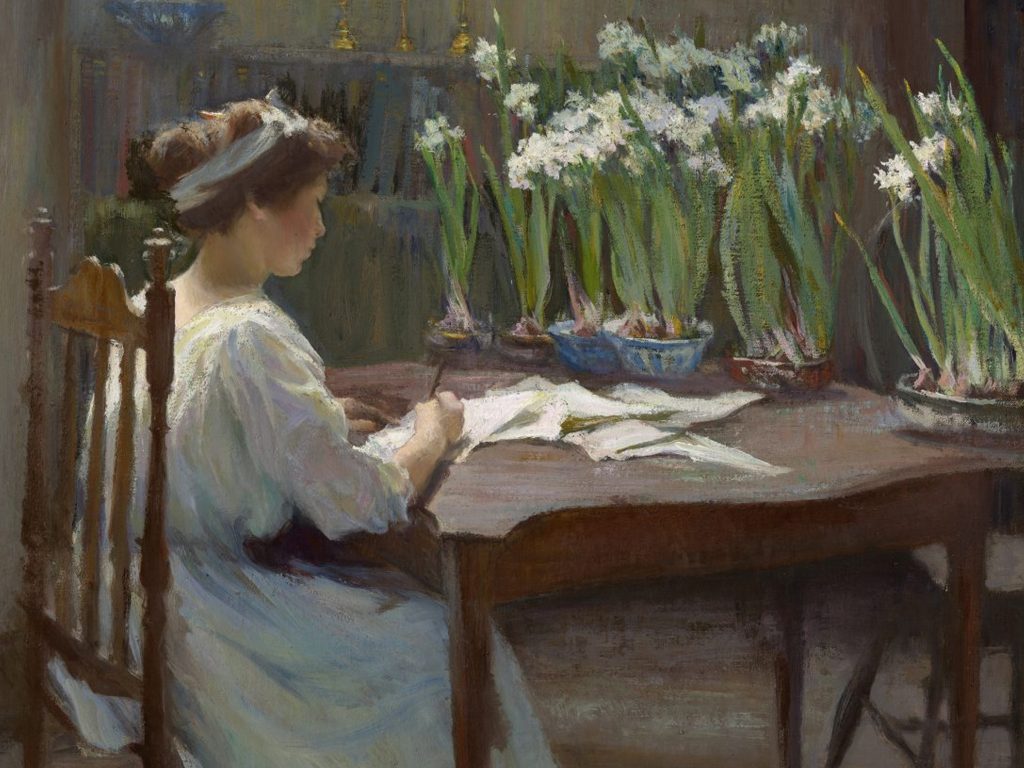
Washington, DC’s National Gallery of Art (NGA) has acquired two more paintings by women artists from the Boston School, enhancing its collection of artworks from the all-male group known for American Impressionism. The works of Mary Bradish Titcomb and Elizabeth Okie Paxton reveal subtle agency in scenes of domesticity in the final years before the passage of the 19th Amendment.
Like the city itself, the Boston School movement was enamored with and influenced by the vibrancy and texture of Impressionism, although local artists more often depicted interiors than landscapes. The 19th-century tradition includes key actors such as Edmund C. Tarbell, Joseph DeCamp, and William McGregor Paxton (Elizabeth’s husband); they all tended to portray women in their compositions as quiet, submissive, and in a Victorian sense. the fight for women’s suffrage continued. As art education became available to female students in Massachusetts, women following the style of the Boston School began to subtly reframe gender roles and presentation, nesting these changes in their dedication to craft.
Erica E. Hirshler, chief curator at the Museum of Fine Arts in Boston, said in an interview with the NGA that women painters “wanted to join the establishment, not subvert it.”
“To prove that they were serious painters, most Boston women artists worked within the aesthetic and social conventions of their time,” Hirshler said.

In Titcomb’s “The Writer” (c. 1912), the model turns away from the viewer, pensively writing in front of a messy pile of paper, expressing a sense of passionate professionalism over presentability. Titcomb is remembered as an independent woman of her time, teaching art alongside her studies to support herself before enrolling in the Boston School of the Museum of Fine Arts in 1889 to begin her professional painting career under the tutelage of the Boston School. Players like Tarbell, Philip Leslie Hale and Frank Weston Benson. She never sold “The Writer,” probably because of her personal issue of being a working woman in her field.
On the other hand, Okie Paxton’s “The Breakfast Tray” (c. 1910) instead of entering the work simply refers to the presence of a woman through her things. In Okie Paxton’s composition, luxe ruffled bedding spills down the side of a bed frame, perched on a black stiletto in front of a chair that sits on an untouched tray of food and drinks. Suggesting a morning love affair in the foreground, the viewer must consider the woman’s identity while viewing her private space in such a state, contrasting with the serious depictions of female models in other paintings attributed to the Boston School.
Titcomb and Okie Paxton establish a sense of true femininity without performance or submission in paintings of delicate mess. Starting April 12, the two paintings will be in conversation with each other, as well as “Five O’Clock” (c. 1910), a painting by Boston School artist Gretchen Woodman Rogers, acquired by the NGA in 2022.


